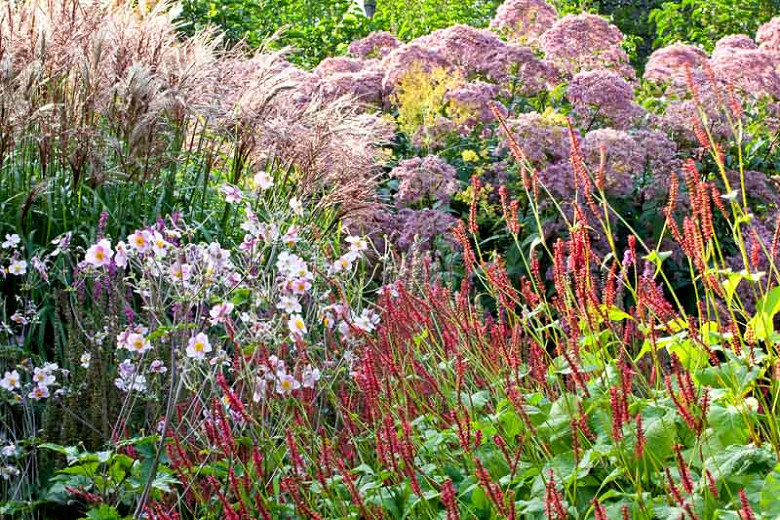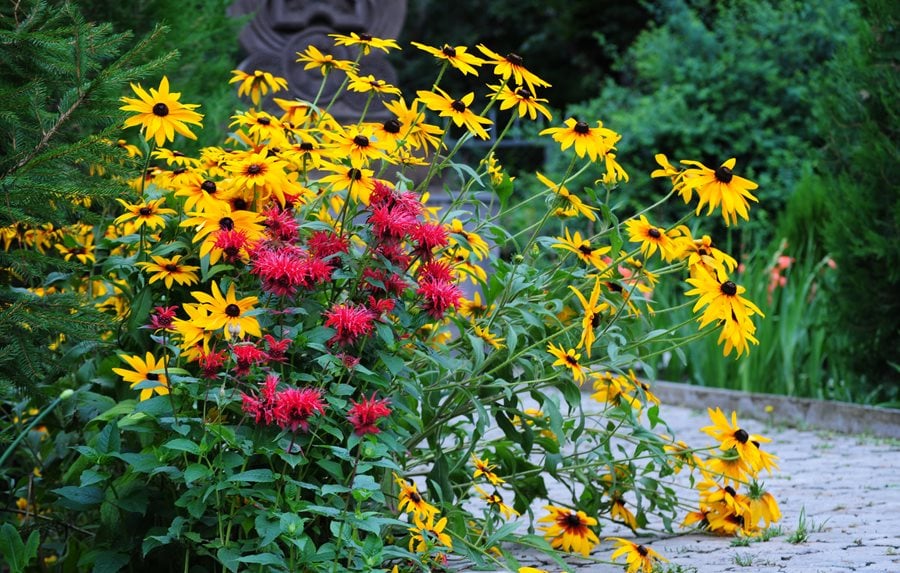Stunning Companion Plants For Ornamental Grasses
Stunning Companion Plants for Ornamental Grasses
Ornamental grasses are a beautiful and versatile addition to any garden. They add movement, texture, and height to the landscape, and they can be used in a variety of ways. But ornamental grasses can also be a bit tricky to pair with other plants. If you want to create a truly stunning garden, it's important to choose the right companion plants.
Here are a few of the best companion plants for ornamental grasses:
- Perennials: Perennials are a great choice for companion plants because they come back year after year. Some of the best perennials to pair with ornamental grasses include:
- Black-eyed Susans (Rudbeckia spp.)
- Coneflowers (Echinacea spp.)
- Daylilies (Hemerocallis spp.)
- Sedum (Sedum spp.)
- Yarrow (Achillea millefolium)
- Annuals: Annuals are a great way to add pops of color and interest to your garden. Some of the best annuals to pair with ornamental grasses include:
- Cosmos (Cosmos bipinnatus)
- Zinnias (Zinnia elegans)
- Petunias (Petunia spp.)
- Salvia (Salvia spp.)
- Marigolds (Tagetes spp.)
- Shrubs: Shrubs can add height and structure to your garden, and they can also provide winter interest. Some of the best shrubs to pair with ornamental grasses include:
- Butterfly bush (Buddleia davidii)
- Ninebark (Physocarpus opulifolius)
- Burning bush (Euonymus alatus)
- Winterberry (Ilex verticillata)
- Barberry (Berberis spp.)
- Vines: Vines can add a touch of elegance and romance to your garden. Some of the best vines to pair with ornamental grasses include:
- Clematis (Clematis spp.)
- Wisteria (Wisteria spp.)
- Honeysuckle (Lonicera spp.)
- Trumpet vine (Campsis radicans)
- Boston ivy (Parthenocissus tricuspidata)
When choosing companion plants for ornamental grasses, it's important to consider the following factors:
- Height: Ornamental grasses come in a variety of heights, so it's important to choose companion plants that will complement their size. For example, you wouldn't want to plant a tall ornamental grass next to a short annual.
- Color: Ornamental grasses can be found in a wide range of colors, so you can choose companion plants that will complement their color scheme. For example, if you have a blue-green ornamental grass, you might want to plant it next to a purple or yellow annual.
- Texture: Ornamental grasses have a variety of textures, from soft and feathery to spiky and coarse. When choosing companion plants, it's important to choose plants that have different textures to create visual interest. For example, you might want to plant a spiky ornamental grass next to a soft and feathery perennial.
- Season of interest: Ornamental grasses can be interesting throughout the year, but some are more interesting during certain seasons. For example, some ornamental grasses have beautiful fall foliage, while others have interesting seed heads in the winter. When choosing companion plants, it's important to choose plants that will provide interest throughout the year.
By following these tips, you can create a stunning garden that features ornamental grasses and their beautiful companion plants.
Ornamental grasses are a beautiful addition to any garden, but they can also be a bit tricky to pair with other plants. If you're looking for some inspiration, be sure to visit Gardenia Inspiration. This website has a wealth of information on companion plants for grasses, including everything from perennials to annuals, shrubs to succulents.
In addition to providing detailed plant profiles, Gardenia Inspiration also offers tips on how to create stunning combinations of grasses and other plants. Whether you're looking for a low-maintenance border or a dramatic focal point, you're sure to find something to inspire you on this website.
So what are you waiting for? Visit Gardenia Inspiration today and start planning your next garden masterpiece!
FAQ of companion plants for grasses
1. What are the benefits of companion planting with grasses?
There are many benefits to companion planting with grasses. Some of the most important benefits include:
- Attracting pollinators. Grasses can attract a variety of pollinators, such as bees, butterflies, and moths. These pollinators are essential for a healthy garden, as they help to pollinate flowers and fruits.
- Providing shelter. Grasses can provide shelter for other plants, especially those that need some protection from the wind or sun.
- Improving soil health. Grasses can help to improve soil health by adding organic matter and nutrients to the soil. They can also help to suppress weeds and pests.
- Creating a more interesting landscape. Companion planting with grasses can help to create a more interesting and visually appealing landscape. By combining grasses with other plants, you can create a variety of textures, colors, and heights.
2. What are some good companion plants for grasses?
There are many good companion plants for grasses, but some of the most popular include:
- Asters. Asters are a great choice for companion plants because they attract pollinators and bloom at the same time as many grasses.
- Coneflowers. Coneflowers are another great choice for companion plants because they attract pollinators and have a long bloom time.
- Sunflowers. Sunflowers are a tall and stately plant that can add height and interest to a garden. They also attract pollinators and produce seeds that can be eaten by birds.
- Verbena. Verbena is a colorful and drought-tolerant plant that can add a pop of color to a garden. It also attracts pollinators and blooms for a long time.
- Sedum. Sedum is a low-maintenance plant that can add texture and interest to a garden. It also blooms in the fall, which can help to extend the bloom time of your grasses.
3. What are some plants that should not be planted near grasses?
There are a few plants that should not be planted near grasses, as they can compete for water and nutrients. These plants include:
- Other grasses. Planting two different types of grasses together can lead to competition for water and nutrients.
- Vegetables. Vegetables can also compete with grasses for water and nutrients.
- Fruits. Fruits can also compete with grasses for water and nutrients.
- Plants that require a lot of moisture. Plants that require a lot of moisture, such as ferns and hostas, can crowd out grasses and prevent them from getting the water they need.
4. How do I choose the right companion plants for my grasses?
When choosing companion plants for your grasses, there are a few factors to consider:
- The size of the plants. Make sure that the companion plants you choose are not too large or too small for your grasses.
- The bloom time. Choose companion plants that bloom at the same time as your grasses or at different times of the year to extend the bloom time of your garden.
- The color of the plants. Consider the color of your grasses when choosing companion plants. You can choose companion plants that have complementary colors or contrasting colors.
- The needs of the plants. Make sure that the companion plants you choose have similar needs for water, sunlight, and soil type as your grasses.
5. How do I plant companion plants with grasses?
To plant companion plants with grasses, simply follow these steps:
- Choose a location that receives full sun or partial shade.
- Prepare the soil by removing any weeds and adding compost or other organic matter.
- Plant the companion plants according to their individual needs.
- Water the plants well after planting.
Image of companion plants for grasses
5 different images of companion plants for grasses:
- Joe Pye weed: This tall, airy plant blooms in late summer and fall with clusters of lavender, pink, or white flowers. It's a great companion for grasses because it provides vertical interest and attracts butterflies and other pollinators.

- Black-eyed Susans: These cheerful flowers bloom in yellow, orange, or red from mid-summer to fall. They're a low-maintenance plant that's easy to grow, and they make a great contrast to the green foliage of grasses.

- Sedum: This succulent plant comes in a variety of colors, including green, pink, yellow, and orange. It's drought-tolerant and easy to care for, and it makes a great filler between grasses.

- Coneflowers: These spiky flowers bloom in shades of purple, pink, and white from late summer to fall. They're a hardy plant that can withstand hot, dry conditions, and they make a great addition to any garden.

- Yarrow: This daisy-like flower blooms in white, yellow, or pink from early summer to fall. It's a low-maintenance plant that's easy to grow, and it attracts butterflies and other pollinators.

Post a Comment for " Stunning Companion Plants For Ornamental Grasses"